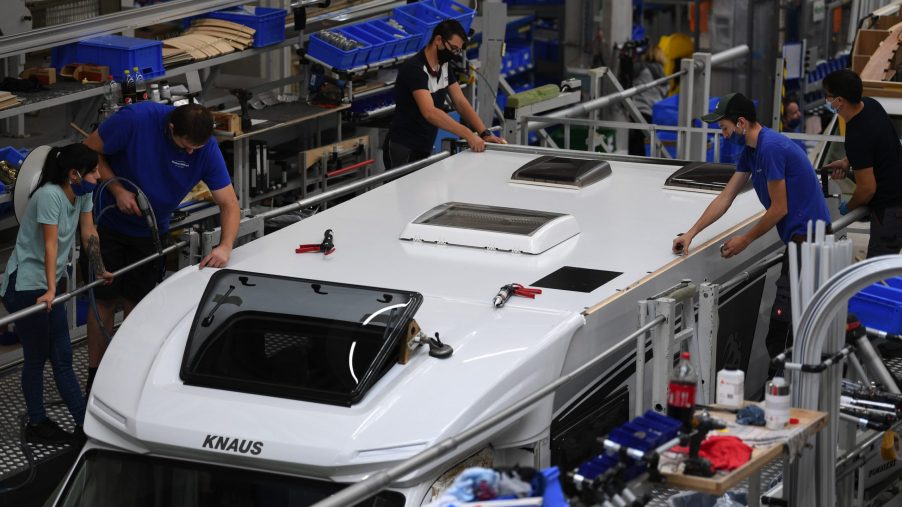
Don’t Overlook This Potential Problem Area of Your RV
An RV is a big investment and one that requires ongoing maintenance if you want to be able to fully enjoy it for many years to come. In particular, there is one area of your camper you should never overlook: the roof. Skipping roof maintenance can potentially result in a myriad of problems, causing major headaches and necessitating costly repairs if not dealt with right away. Here’s how to properly care for your RV’s roof.
The importance of regular roof maintenance
Although roof care is an incredibly important part of RV living, it is easy to overlook. This is largely due to the fact that most people don’t make a point of climbing up to the roof unless they specifically notice a problem — and many roof-related problems are difficult to spot until they’ve gotten out of hand.
According to RV Life, the most significant cause of roof damage is leaks. Rainwater seeping into the roof may cause mold and mildew, which is challenging to remove and can pose a health risk.
Although it might seem as though rain must be the biggest risk factor in roof damage, the sun is actually the bigger culprit. RV Life points out that constant exposure to sunlight can result in dried-out coatings and seals, thus making the roof more susceptible to leaks.
How to properly inspect your RV’s roof
In order to reduce the risk of costly damage, preventative maintenance is key. RV Life recommends yearly inspections. During these inspections, you should be looking for any areas that appear to be peeling or dry, as this could indicate that the roof’s coating is wearing away and needs to be revamped. Any areas with holes or tears should be repaired immediately, even if they appear minor.
You should also take care to check all seals for signs of wear and tear. You will find seals around the unit’s vents, as well as around any roof-mounted accessories such as solar panels and A/C units. It is important to note that not all roofs are equipped to handle the weight of a person, so be sure to check the strength of your roof before making your way up there.
Camping World points out that although many recreational vehicles now feature single-piece roofs, this doesn’t eliminate the need to regularly check for potential leaks. While a single-piece roof does reduce the risk of leaks, the roof will still have seams where it connects to the RV. Checking these areas at least once every year can help you catch problems early, before the damage has a chance to really set in.
Other problem areas to watch out for
Although roof leakages have the potential to cause some of the worst damage, there are still other areas of your vehicle that benefit from plenty of preventative maintenance. One such area is the water heater. In order to ensure optimal functionality, RV Life recommends draining and flushing your water heater at least once per year. When you do this, you can also check the electric heating element and anode rod to see if they need to be replaced.
Another vital element of your RV is the battery. As these are very expensive, it is worth spending a bit of time upfront to care for them. If you are not using your recreational vehicle during the colder months, RV Life recommends charging your battery and then storing it indoors during the winter in order to make sure it will last longer.
While RVs do require ongoing care and maintenance, taking the time to do this properly will help you avoid facing frustrating — and potentially costly — problems down the road. Remembering to check your roof annually can reduce the risk of damage, enabling you to enjoy your camping trips in rain or shine.


